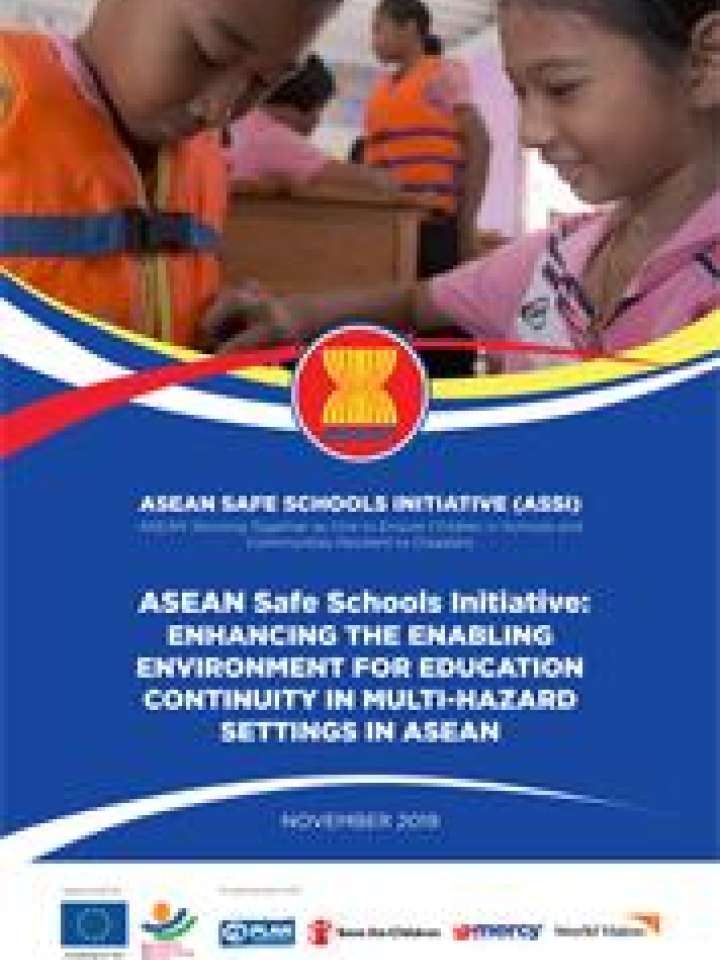ASEAN Safe Schools Initiative: Enhancing the enabling environment for education continuity in multi-hazard settings in ASEAN
ASEAN region is home to various types of disasters, large and small scales caused by various drivers. Risk drivers in ASEAN countries may vary, but among many vulnerable groups and sectors, children regularly lose school days, have more detrimental effects and bear the negative impacts on their education over their whole school experience. Damaged school buildings and road access to schools during disasters or emergencies cause disruption of children’s education. The long-term impacts of disasters also increase the risks of psychological stress and physical injuries to girls and boys, making them more likely to drop out of school.
This research aims to examine education continuity management efforts in the region during or post-disasters or emergencies. It intends to update and bring new evidence and findings on educational continuity efforts and challenges, with multihazard perspectives and based on more recent disaster cases in ASEAN region. The research looks to illustrate the linkages among education development programming, disaster risk reduction in education sector and emergencies and provides a reference for the governments in enacting their policies in school safety. Furthermore, this research has specific objectives as follows: 1) Map and assess significant education continuity efforts in ASEAN during emergency and/or post-disasters; 2) Identify and examine the challenges and gaps in the implementation of education continuity plans in ASEAN; 3) Explore existing regulatory frameworks (for instance, policies, guidelines, budgetary, regional and national coordinating mechanisms) that support education continuity management in the region; and 4) Recommend ways to enhance the education continuity implementation in the region.
Explore further
